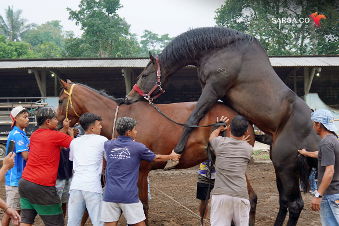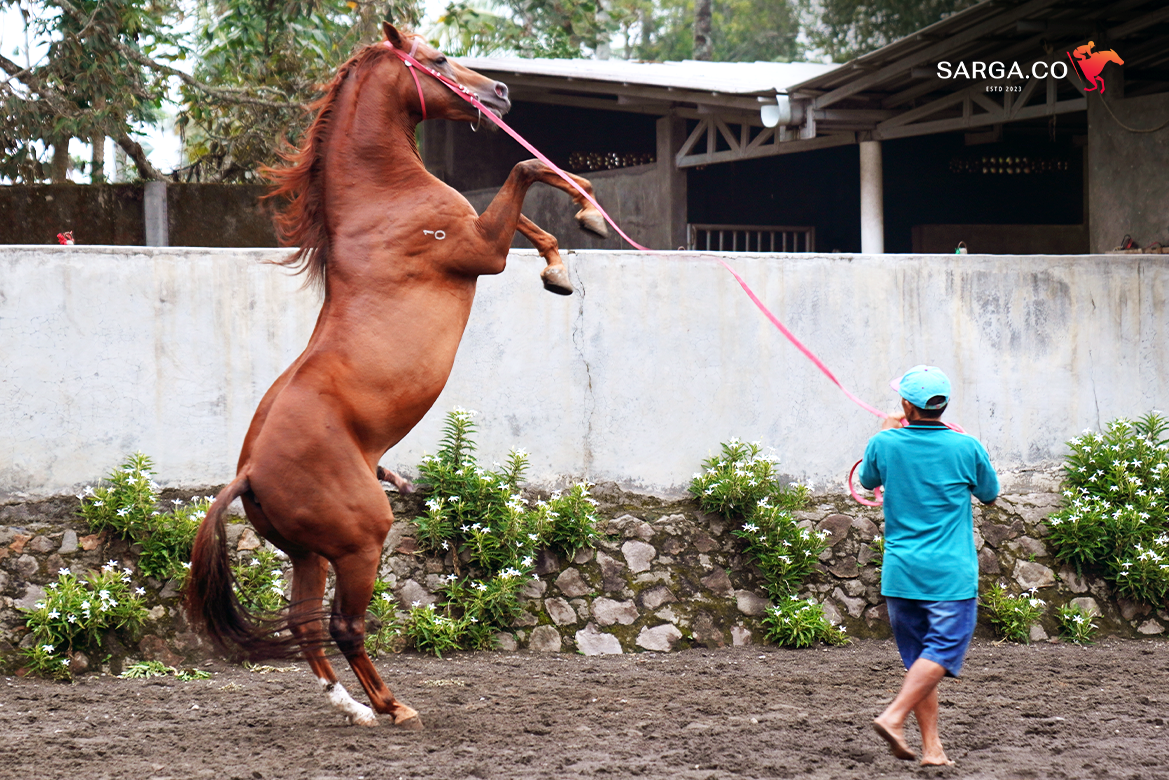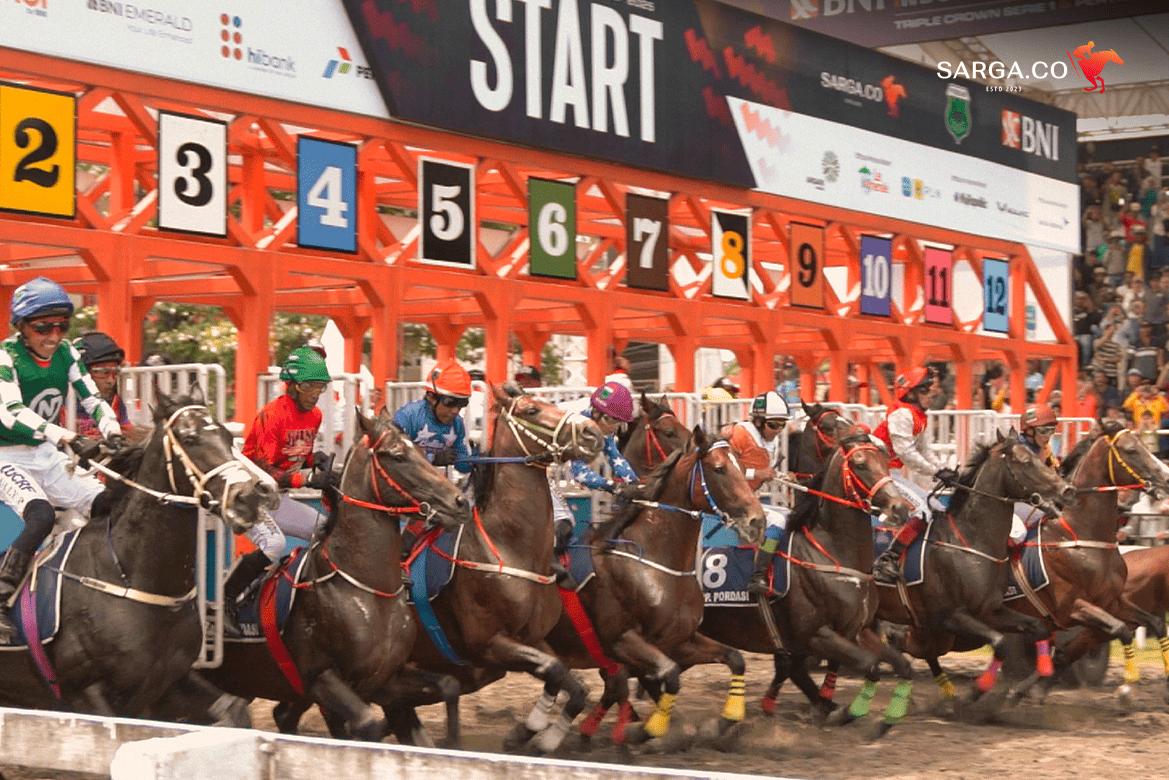In racehorse breeding, mating is a crucial step in producing high-quality offspring. This process is not merely about bringing together a mare and a stallion but requires a deep understanding of reproductive cycles, equine behavior, and years of experience.
Yani Sondakh, a horse breeder from Humaira Stable, shares insights into how this process works and the key factors to consider.
Beyond instinct: The science of horse breeding
According to Yani, horse mating is not a simple act that can be done arbitrarily. Before the process takes place, the mare must be in heat.
Unlike stallions, which show no signs of arousal, a mare’s heat cycle must be carefully observed to ensure practical breeding. In practice, the mare must be secured before the mating process begins. This is done by tying her legs to prevent kicking—a common reaction, as some mares may feel uncomfortable or ticklish during mating.
Additionally, the mare’s tail is tied to facilitate the stallion’s penetration into her reproductive organs.
Selecting the right stallion and timing the mating process
Yani Sondakh, horse breeder and Cluster, stallions THB
Source: SARGA.CO
Not every stallion is suitable for every mare. The selection of the stallion is entirely at the discretion of the mare’s owner. At Humaira Stable, one stallion is called Cluster, a Thoroughbred (THB). One of the mares is a local horse named Agia Sophia from West Sumatra. However, the success of mating does not always happen in a single attempt.
A study by Hendri et al. (2012) titled “Comparison of Reproductive Performance of Local Horses and Thoroughbred Crossbreeds in Payakumbuh” highlights the importance of improving the genetic quality of local horses through THB crossbreeding. The primary goal of this breeding effort is to enhance local horses’ genetic potential.
As with humans, the best time for mating is during the mare’s fertile period. Breeding during the first heat cycle generally has a low success rate, so breeders must carefully observe the optimal timing.
Horse mating repetition
Horse mating often needs to be repeated to ensure effectiveness. Not everyone can determine whether the mating process has been successful.
While some signs may indicate successful mating, there are cases where the libido and stimulation between the stallion and mare are not balanced. Yani Sondakh explains that there is a difference between mating driven solely by lust and a hormonally balanced process.
When mating occurs exclusively due to an immediate urge, sperm release may be forced and not necessarily result in conception. Therefore, it is crucial to observe whether the first mating attempt was typical or if it needs to be repeated.
Mental and physical preparation for horses
The horse was taken for a ride to avoid boredom
Source: SARGA.CO
Before repeating the mating process, horses are usually taken for a walk first. This activity helps prevent boredom and improves their mood.
Horses forced to mate without a break for relaxation tend to produce suboptimal results. This emphasizes the importance of experience in horse breeding, as understanding each horse’s unique characteristics is crucial. Keeping the horse comfortable throughout the process is also essential.
Costs and requirements for horse mating
Horse breeding is an expensive endeavor. The cost of mating depends on the genetic lineage and horse breed type.
For the cost of horses with G blood (resulting from the crossbreeding of local mares and THB stallions and KP (resulting from the crossbreeding of THB mares with G1 stallions), the breeding cost is around Rp15 million. If the crossbreeding is done between a Pony and a THB, the price is slightly lower, whereas the cost for THB with THB is higher.
In addition to the main breeding fee, the mare’s owner must also cover additional costs such as stable fees during the breeding process, horse feed costs, care expenses including grooming services and other facilities, and ultrasound (USG) examination costs to confirm pregnancy. After mating, the stallion owner is responsible for issuing a mating certificate.
This document records the mating date and serves as a basis for issuing a birth certificate once the foal is born.
The fusion of knowledge and experience in horse breeding
In horse breeding, experience plays an equally important role as theoretical knowledge. Yani Sondakh has been involved in horse breeding since the age of seven and has inherited expertise from generations of family members passionate about horses.
This demonstrates that horse breeding is not just about technique but also about understanding animal behavior and reading situations with a well-honed intuition. With the right combination of knowledge and experience, breeders can ensure that each mating process is optimal and produces high-quality offspring.
Breeding quality horses for a stronger genetic line
The process of horse mating is a complex journey that requires specialized expertise. All aspects must be carefully considered, from selecting the right stallion to determining the perfect timing and understanding equine psychology.
With the right approach, the next generation of horses will possess excellent qualities and carry superior genetic traits. Understanding this process provides valuable insights into how professional horse breeding is conducted for horse enthusiasts and those new to the equestrian world.




